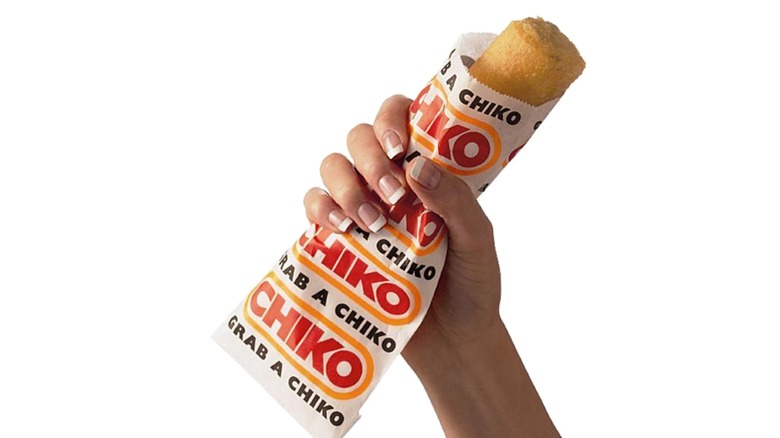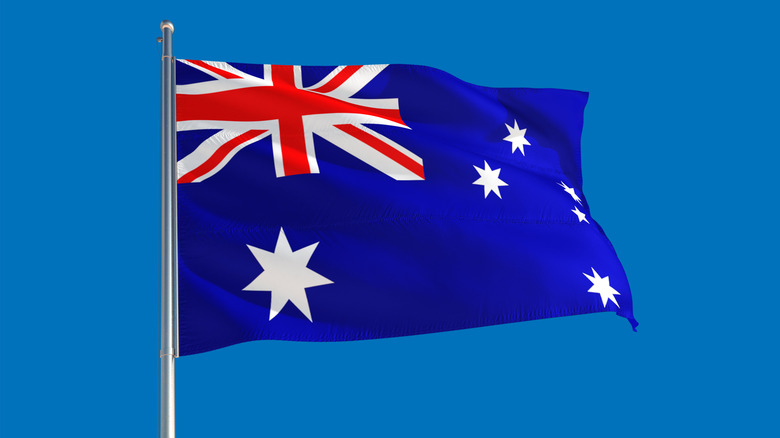Chiko Rolls: The Savory Australian Snack Inspired By Chinese Egg Rolls
Most Australian kids growing up in the '70s and '80s would be familiar with the iconic Chiko Roll advertisements that hung on the walls of their local fish and chip joint. Later on, the ads featuring scantily-clad girls on motorbikes eating the fried food, were seen as controversial and were changed accordingly (via The Age). Despite the change in advertising, however, the Chiko Roll is still an iconic part of Australian food culture and also on the menu at most independent fast food eateries, including those around located around surf beaches.
While Chinese egg rolls might have inspired it, the savory, deep-fried food is about three times the size of the traditional snack (via SBS). The pastry is somewhat thicker — to the point where it's almost chewy, unlike a crispy egg roll. The contents include a spicy mixture of ground beef, diced carrots, and cabbage. According to the Chiko website, the snack was invented in 1950 by Frank McEncroe of Bendigo, Victoria, after he saw a vendor selling a Chinese-style roll with a "flimsy" casing. He wanted a more robust, one-handed snack so people could hold it in one hand and a beer in the other while at the footy or a cricket match. He marketed the product at the New South Wales, Wagga Wagga Agricultural Festival in 1951 — something that would end up causing controversy between two politicians in the Australian parliament many years later!
It never contained chicken but did cause a parliamentary debate
According to SBS, the Chiko Roll was first sold as a "Chicken Roll" even though it never contained any actual chicken. It originally had mutton but in its modern state, it's beef. As Australians love to shorten just about every word — think "afternoon" to "arvo" or "service station" to "servo" — it eventually became known as the Chiko.
From around '65, the Chiko was a familiar site in "takeaway restaurants, milk bars (which no longer exist in Australia), and fish and chip shops" and following some heavy marketing, they reached a peak of around 40 million yearly sales in the '70s at a time when the entire population of Australia was approximately 13 million (via Australian Bureau of Statistics).
While some may describe the roll as something that's "four percent beef and 100 percent stodge [and can be] used to prop fire doors in lieu of an actual brick," most Australians would agree it's definitely worthy of Aussie icon status. In fact, it caused an argument in the Australian parliament back in 2016 when two politicians heatedly debated the truth of its origin story — each claiming it began in their own hometowns (via The Leader). Today, it may have lost its resemblance to the Chinese savory treat — unless you imagine an egg roll on steroids — but it's still something worth seeking out on a trip Downunder, to see what all the fuss is about.

